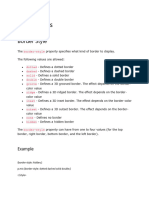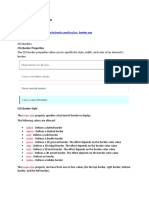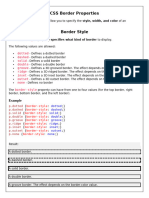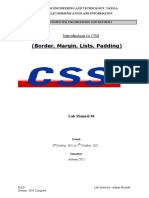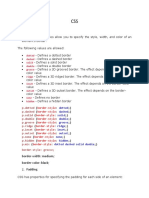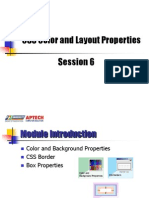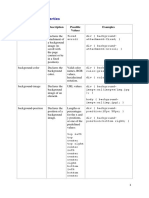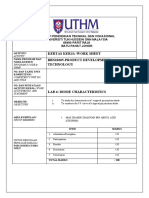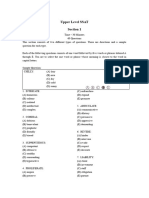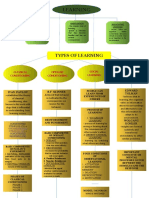0% found this document useful (0 votes)
32 views8 pagesCSS Border - Javatpoint
The document provides an overview of CSS border properties, including border-style, border-width, and border-color, essential for styling HTML components. It details various border styles such as dotted, dashed, solid, and more, along with examples of how to implement these styles in HTML and CSS. Additionally, it explains how to set border width and color using different methods, emphasizing the importance of combining these properties for effective styling.
Uploaded by
shubhamCopyright
© © All Rights Reserved
We take content rights seriously. If you suspect this is your content, claim it here.
Available Formats
Download as PDF, TXT or read online on Scribd
0% found this document useful (0 votes)
32 views8 pagesCSS Border - Javatpoint
The document provides an overview of CSS border properties, including border-style, border-width, and border-color, essential for styling HTML components. It details various border styles such as dotted, dashed, solid, and more, along with examples of how to implement these styles in HTML and CSS. Additionally, it explains how to set border width and color using different methods, emphasizing the importance of combining these properties for effective styling.
Uploaded by
shubhamCopyright
© © All Rights Reserved
We take content rights seriously. If you suspect this is your content, claim it here.
Available Formats
Download as PDF, TXT or read online on Scribd
/ 8












